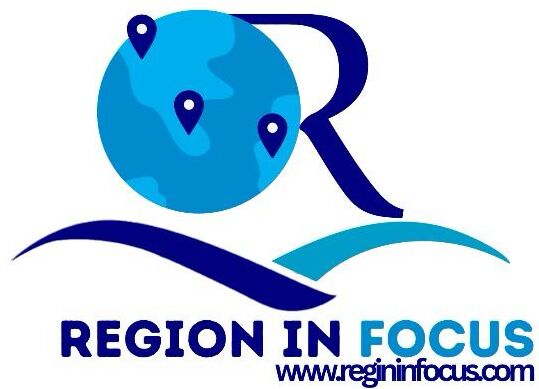Introduction
Artificial intelligence has been transferred to laboratories and our daily lives too fast and governments are now scrambling to develop regulations that safeguard their citizens without snuffling the innovations. Three of them are distinguishable: the risk-based and precautionary model of the European Union; the industry-friendly, mixed-federal system of the United States with a combination of guidance and selective control; and the state-centered, control-and-compliance model of China, which is oriented on social stability and information control. Both represent various legal cultures, geopolitical aspirations and political economies. A comparison of them is a way of not only clarifying regulatory choices, but also establishing the way in which power, values, and markets will influence the global AI space.
The European Union: Caution, classification and binding regulations.
The European Union has decided to regulate AI using a binding comprehensive statute that considers risk as the organizing principle. The EU Artificial Intelligence Act- described as the most aggressive AI legislation ever- breaks down AI systems into levels of risk (illegal practices to high-risk systems) and places a duty on both providers and deployers related to transparency provisions, data management and human control. The Act officially became effective on 1 August 2024 and applies its provisions in phases with prohibitions and some requirements having already taken effect and additional requirements of general-purpose AI and high-risk systems due on a staggered schedule.
This strategy focuses on preventive measures: systems that are not accepted are prohibited, and systems at risk must be tested with conformity checks and effective documentation before being put into operation. The EU model lays the legal liability and compliance responsibility directly on the firms that are in its market with the focus being on the individual rights, safety, and accountability. Nonetheless the complexity of the law has drawn backlash in business circles and among startups worried about the cost of compliance and of ambiguity- a conflict between regulatory quality and business competitiveness which Brussels have to navigate.
The United States: Directives, motivation, and the changing policy environment.
In comparison, the United States traditionally had a more permissive approach toward innovation, voluntary standards, and sectoral regulations instead of a grand law. NIST in particular with its AI Risk Management Framework has published voluntary guidance to assist industry in recognizing and addressing risks without constraining the industry. The NIST AI RMF is designed as a pragmatic, non-prescriptive device to coordinate the best practices throughout the private sector.
The American federal policy has been swinging. In 2023, the Biden White House released an extensive executive order that advocated a safety testing and coordination between the government and industry, and later agency measures placed export bans on specific AI-related technologies. Nevertheless, the regulatory path changed in 2025: the Trump administration revoked the 2023 executive order of Biden and provided new guidelines aimed more at supporting the U.S. leadership and streamlining the infrastructure, which clearly shows that changes in politics can as quickly transform the priorities in regulation. This vulnerability generates regulatory indecision but maintains nimbleness and reflects an inclination toward targeted action–export restrictions, procurement regulations and industry protections–because of a Europe-like omnibus law.
China: Administration, control of content and fast administrative regulations.
The model of China revolves around the state control and social stability, and the regulators pay attention to the content, ideological conformity, and the social impacts of generative models. The Interim Measures of the Management of Generative AI Services that are the first administrative regulations specifically aimed at generative AI came into effect in mid-August 2023 and providers have to register, to use content control, and make the output comply with the principles of the socialist core values and with the state guidelines. These controls are a combination of administration and technical aspects of safety and are implemented by the state agencies like the Cyberspace Administration of China.
The instrument mix of China is nimble and administrative, instead of being judicial: rules may be enforced swiftly and revised regularly, and platform regulation, licensing, and content moderation are often used to enforce them. To the firms, this translates to working in an environment that is strictly policed in which compliance is more focused on politics and social issues as well as consumer safety. Chinese model is efficient in quick execution and conformity to the objectives of the state yet provides few areas of the type of civil-liberties safeguards that guide European policymaking.
Comparative implications: norms, markets and geopolitics.
The three methods come out with different trade-offs. EU model focuses more on rights and ex ante risk control because they are capable of protecting people and creating a sense of trust among people, but it will slow down the process of adopting the market and also give an advantage to the existing market players who are always in a position to meet security fees. The U.S. system is more focused on innovation and flexibility, based on unenforced standards and specific enforcement- it can be deployed faster but may result in a lack of regulation and unequal consumer protections. China has emphasized the most state surveillance and fast implementation to create home ecosystems to follow the political interests; they can quickly expand safe-appearing systems in accordance with national interests at the expense of suppressed civil freedoms as well as restricted external interoperability.
The differences have a geopolitical aspect as well. When companies and nations must serve more than one market, compliance will strain and the global AI ecosystem may be divided into regulatory domains: an EU based rule system that focuses on rights, a U.S. based system that focuses on market-driven standards, and a Chinese system that focuses on state-controlled standards. Export controls, data localization regulations, and procurement policies are all instruments of strategic competition and regulation. The outcome can be regulatory decoupling in sensitive technologies, and the result of that is affecting supply chains and research collaborations and the spread of AI capabilities in the world.
Fourth ways ahead: alignment, interoperability, and multi-stakeholder governance.
Due to the cross-border situation of AI, a particular model will not be enough. A pragmatic course is based on the key traits of both: binding protection of basic rights and risky applications (an EU strength), flexibility and industry adaptability (a U.S. strength), and the means to ensure basic safety and reliability (a Chinese administrative strength, without political restraints). Multilateral collaboration in the form of common guardrails – testing standards, incident reporting, and interoperability norms – would facilitate the overall load on the multinational companies and prevent hazardous fragmentation.
It is vital to have multi-stakeholder processes in which industry, civil society, standards bodies, and governments come up with technical norms together. Such tools as the RMF created by the NIST may act as lingua franca in cross-jurisdictional use though legal regimes may vary. Meanwhile, the states will have to lead geopolitical rivalry and act of coordination of utmost benefit especially in the areas of export controls, safety evaluation and responsible procurement.
Conclusion
The EU, the U.S., and China are not just writing rules; they are casting different images of the ways societies ought to deal with the dangers and benefits of AI. European and American policymakers are more focused on precaution and rights, innovation with explicit guardrails, and control by the government and social stability respectively. All the models have their advantages and disadvantages; they are together a tripartite governance reality which has to be survived by a firm and the policymaker. The difficulty of the next few years is to create channels technical, diplomatic, multilateral, which minimize the destructive fragmentation without eliminating in any way legitimate difference in values and policy objectives. The stakes are great: the question of how we will govern AI will not only determine the way technology is used, but also the conventions and power relationships of the digital era.


